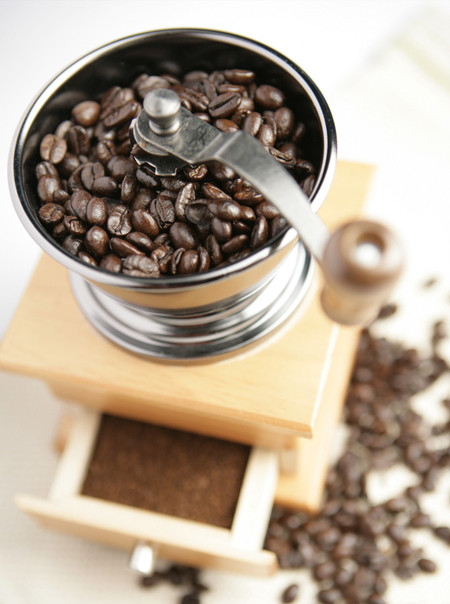Kilimanjaro Coffee makes the most "wild" coffee in Africa
Coffee gourmets often use words such as "wild" or "wild" to describe Kilimanjaro coffee, which has a unique cacao sub-fruity aroma and a strong degree of alcohol. This coffee bean has exceptional quality. It is one of the top representatives of Tanzania AA coffee beans, bred by volcanic ash and achieved by nature. It can be said that pure Kilimanjaro coffee is "the most African coffee."
Tanzanian coffee has long been loved by Europeans and ranks among the famous brands. Europeans give Tanzania coffee the nickname "coffee gentleman", Chinese coffee connoisseurs will it and "coffee king" blue mountain,"coffee lady" mocha and called "coffee three swordsmen".
Tanzania's Mount Kilimanjaro is 5895 meters above sea level and connected to Mount Meru. It is the main production base of Kilimanjaro coffee. Kilimanjaro is the highest peak on the African continent and the only snowy peak on the equator. It is "the roof of Africa" and "Snow White on the Equator". Fertile volcanic ash gives the coffee its rich texture and soft acidity, characteristic of typical African coffee beans. Kilimanjaro AA is the highest level of beans, all aspects of quality are superior. Medium or above baked with a strong aroma. Suitable for single serve or iced coffee.
Tanzanians still maintain a lot of coffee traditions, and many times they collect the ripe fallen fruit under the coffee tree, which makes the quality of coffee somewhat damaged. They have been using the sun method of coffee beans, rarely washing method, which allows coffee beans to absorb the aroma of the pulp, so the fruit flavor is heavier.
Kilimanjaro coffee is very characteristic, it exudes a delicate fragrance, and contains wine and fruit aroma, aftertaste after tasting endless, from the appearance of Kenya coffee is very similar, comprehensive taste is closer to Sumatra Karao coffee. After drinking Kilimanjaro coffee, you will always feel a soft and mellow earthy taste at the corner of your mouth.

Kilimanjaro coffee is mainly suitable for blending, you can make your own blend or make a variety of fancy coffee.
Single item production:
Brewing: To brew a good cup of coffee, in addition to fresh coffee powder and slightly harder water, there must be a handy brewing tool. There are three main types of coffee brewing machines commonly used.
Drip filter: wet coffee powder with water, let coffee liquid to fall naturally through the filter cloth or filter paper speed, flow to the container. Basically, this method does not soak the coffee powder, just let the hot water slowly pass through the coffee powder. Drip cups and electric coffee machines belong to this category, is the simplest brewing tool, can brew clean and bright color coffee.
Follicular: coffee powder into the pot, soaked in hot water for a few minutes, and then filtered by filter cloth or filter to form a cup of coffee liquid.
Siphon pot, drip pot, Belgian coffee pot and Vietnamese coffee pot, etc., all belong to follicular brewing tools, they all have a soaking process, thus forming a more complex taste.
High-pressure coffee: Pressurized hot water is used to penetrate the compacted coffee powder to produce a thick cup of coffee. Tools in this form include mocha pots and espresso machines.
Fast brewing method: can use Italian espresso machine, faster coffee brewing method. Espresso machine can continuously extract several cups of coffee, the high pressure in the boiling process can dissolve the oil and colloid in the coffee beans, the essence of the beans is completely extracted through pressure, making the brewed coffee more concentrated, taste and aroma better.
Mixing:
First: choose good quality coffee beans, because the use of poor quality coffee beans, of course, will greatly reduce the flavor of coffee, even if the production of a very balanced coffee, but also can not make delicious coffee, choose good quality coffee beans, is the biggest point.
Second: eliminate defective beans, mixed with defective beans, the taste will deteriorate. Therefore, it is better to remove the defective beans without being stingy. For example, long worms with holes, abnormal development, shell without kernel, all picked out.
Third: understand the characteristics of coffee beans, if the individual characteristics of coffee beans to be mixed are not very well understood, it is difficult to mix good or expected coffee, such as mocha coffee sour heavy, can not be used to dilute the sour coffee.
Fourth: understand the different degrees of roasting, different coffee beans by the degree of roasting different, its flavor is also different, so also a good grasp, such as Kilimanjaro, Blue Mountain is generally light roasting, carbon burning is deep roasting and so on.
Fancy coffee production: fancy coffee variety, to Japanese cappuccino as an example to introduce.
First, make Kilimanjaro coffee beans into hot coffee.
Pour hot water into the coffee cup, warm the coffee cup for 20-30 seconds, and then dry it.
3. Put the fine sugar in a coffee cup. Pour in hot coffee without stirring.
4. Cover the foamed cream from the edge of the cup to the center of the circle in a spiral manner on the coffee surface. To cause to assume a spiral pattern.
5. Sprinkle cinnamon powder and lemon peel crumbs on top. Serve.
selected
"Freshness" is the most important factor in purchasing Kilimanjaro coffee beans, and there are several steps to determine whether the beans you buy are fresh or not:
1. Grab a handful of coffee beans and feel whether they are solid beans with your palm.
2, close to the nose to smell the aroma is enough.
3, take a bean into the mouth bite twice, there is a crisp sound that the beans are well preserved without moisture.
If you want to buy a single Kilimanjaro coffee bean, grab a handful in the palm of your hand. In addition to judging according to the above, you should also see whether the color, particle size and shape of each bean are similar, so as not to buy mixed beans. If you buy a blend of beans, it's normal to have different colors, particle sizes, and shapes.
ingredients
Green beans: Green beans are unroasted beans, which contain 11.5% fat; 11.5% moisture; 28.6% crude fiber; 4.0% minerals; 6.2% tannins; 1.3% caffeine; 17.0% essence; 8.1% sugar; 11.8% protein.
Roasted beans: Roasted beans contain 13.0% fat; 1.5% caffeine; 29.5% crude fiber; 2.6% moisture; 5.0% minerals; 4.2% tannins; 29.4% essence; 2.0% sugar; 12.8% protein.
evaluation standard
Taste-smooth, rough, etc.
Particles-too light, too heavy, etc.
Acidity-slightly acidic, upper acidic, etc.
Freshness--aged to fresh
Defects-acidic, grassy, musty, etc.
Coffee Cup-Fiber-Roasted, Washed, Fired, Old Cup, etc.
Overall assessment-mild, rich, bitter, etc.
Fragrance--from weak to strong
fullness--not full enough to quite full
Important Notice :
前街咖啡 FrontStreet Coffee has moved to new addredd:
FrontStreet Coffee Address: 315,Donghua East Road,GuangZhou
Tel:020 38364473
- Prev

Some personal opinions on the production of Blue Mountain Coffee
With the launch of Blue Mountain Valenford coffee in the past two days, many friends are asking me what appliances and methods I use to make blue mountain coffee at home. I think this question should be viewed from two aspects. First, Blue Mountain Coffee is a medium-light roasted high-quality Arabica coffee beans (color 90) so from this point of view, all the utensils for making filtered coffee are suitable. Ratio
- Next

Ethiopian coffee beans mocha coffee boutique coffee beans
Produced in Ethiopia. Beans are small and fragrant, with strong sour and mellow taste, moderate sweetness and special flavor. Washed coffee beans are well-known high-quality coffee, often drunk on a single basis. However, if mixed coffee can be blended, it is an ideal comprehensive coffee with ideal flavor. Mocha coffee bean origin: Ethiopia (Ethiopia) roasting method: CityRoast characteristics: 1, taste: slightly sweet with soft
Related
- Detailed explanation of Jadeite planting Land in Panamanian Jadeite Manor introduction to the grading system of Jadeite competitive bidding, Red bid, Green bid and Rose Summer
- Story of Coffee planting in Brenka region of Costa Rica Stonehenge Manor anaerobic heavy honey treatment of flavor mouth
- What's on the barrel of Blue Mountain Coffee beans?
- Can American coffee also pull flowers? How to use hot American style to pull out a good-looking pattern?
- Can you make a cold extract with coffee beans? What is the right proportion for cold-extracted coffee formula?
- Indonesian PWN Gold Mandrine Coffee Origin Features Flavor How to Chong? Mandolin coffee is American.
- A brief introduction to the flavor characteristics of Brazilian yellow bourbon coffee beans
- What is the effect of different water quality on the flavor of cold-extracted coffee? What kind of water is best for brewing coffee?
- Why do you think of Rose Summer whenever you mention Panamanian coffee?
- Introduction to the characteristics of authentic blue mountain coffee bean producing areas? What is the CIB Coffee Authority in Jamaica?

